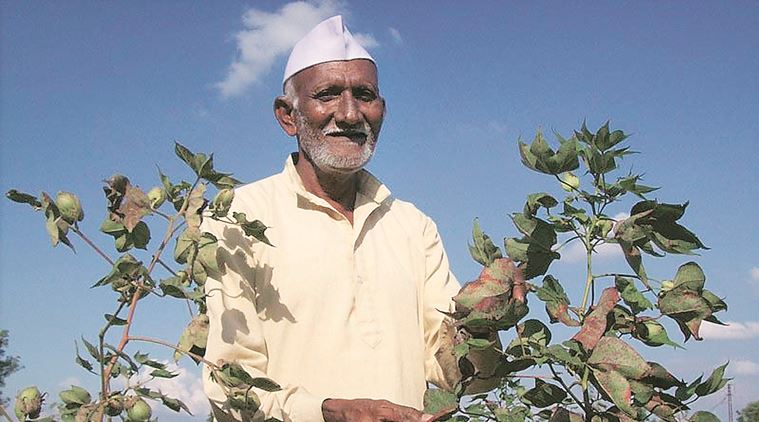 The total area grew particularly during the first decade of this century. (Archives)
The total area grew particularly during the first decade of this century. (Archives)
India has the world’s fifth largest cultivated area under genetically modified (GM) crops, at 11.4 million hectares (mh) in 2017. But unlike other big growers, its entire GM crop area is under a single crop — cotton — incorporating genes from the Bacillus thuringiensis or Bt soil bacterium coding for resistance against heliothis bollworm insect pests.
The country with the highest area under transgenic crops, at 75 mh, is the United States. According to the International Service for the Acquisition of Agri-Biotech Applications (ISAAA), the 75 mh GM acreage comprised 34.05 mh soyabean, 33.84 mh maize (corn), 4.58 mh cotton, 1.22 mh alfalfa, 0.876 mh canola, 0.458 mh sugar-beet, 3,000 hectares potato and around 1,000 hectares each of apples, squash and papaya.
Similarly, Brazil’s total 50.2 mh GM crop area included 33.7 mh soyabean, 15.6 mh of maize and 0.94 mh of cotton. The corresponding acreage break-up for Argentina’s 23.6 mh comprised 18.1 mh of soyabean, 5.2 mh maize and 0.25 mh cotton, while it was 8.83 mh canola, 2.50 mh soyabean, 1.78 mh maize, 15,000 hectares sugar-beet, and 3,000 hectares alfalfa in the case of Canada’s total 13.1 mh.
ISAAA’s latest ‘Global Status of Commercialized Biotech/ GM Crops in 2017’ report shows farmers across the world to have planted 189.8 mh under transgenic crops last year. This is as against 1.7 mh in 1996, the year when they were grown commercially for the first time. Total planted area grew particularly during the first decade of this century, while slowing down in the last five years.
The report by the global crop biotech advocacy organisation has estimated the highest share in the world’s total 189.8 mh GM crop area for 2017 to be of soyabean (94.1 mh), followed by maize (59.7 mh), cotton (24.1 mh), canola (10.2 mh), alfalfa (1.2 mh) and sugar-beet (0.50 mh). The GM traits in these crops — through introduction of alien genes into host plants — included both insect-resistance and tolerance for application of glyphosate herbicide.
In India, the GM crops that are under regulatory consideration — apart from the already commercialised Bt/insect-resistant cotton — include glyphosate-tolerant cotton and biotech hybrid mustard. Both the Bollgard II-Roundup Ready Flex (BGII-RRF) cotton event of Monsanto (incorporating Bt as well as glyphosate-tolerant genes) and transgenic mustard developed by Delhi University’s Centre for Genetic Manipulation of Crop Plants (harbouring three alien genes that enable higher yields through hybridisation) have undergone all the mandated bio-safety research and open field trials. Their commercial release has, however, been stuck due to opposition from environmental activists.
In the case of BG II-RRF cotton, the developer (Monsanto) itself has withdrawn its regulatory applications, following disputes with the government over intellectual property protection on GM technologies. But that has come even as a high-level expert panel constituted by the Prime Minister’s Office has found 15 per cent of cotton area planted across Andhra Pradesh, Telangana, Maharashtra and Gujarat in the 2017 season — and about five per cent in Punjab — to be under hybrids containing the “unapproved” BG II-RRF event.
This is, of course, an indication of demand for GM technology among Indian farmers — whether or not the government and green NGOs like it.